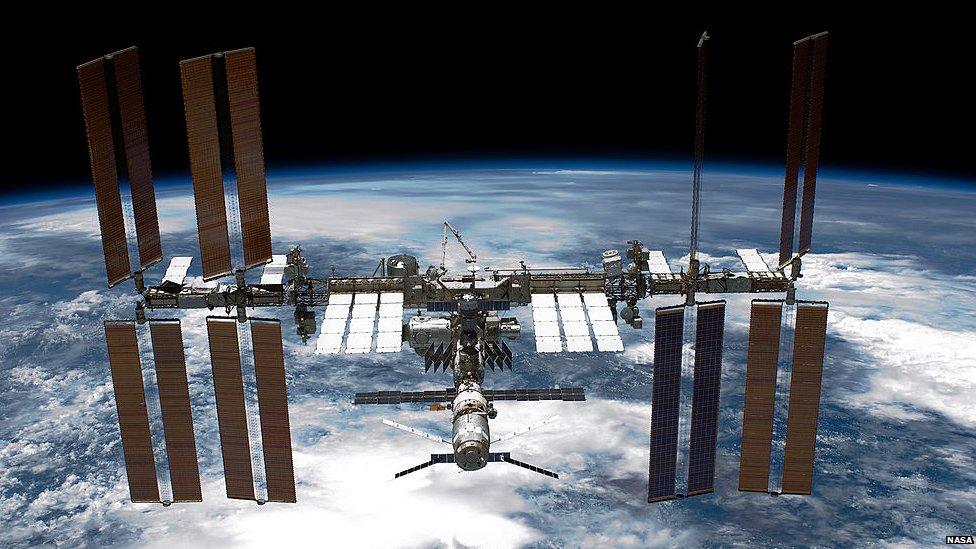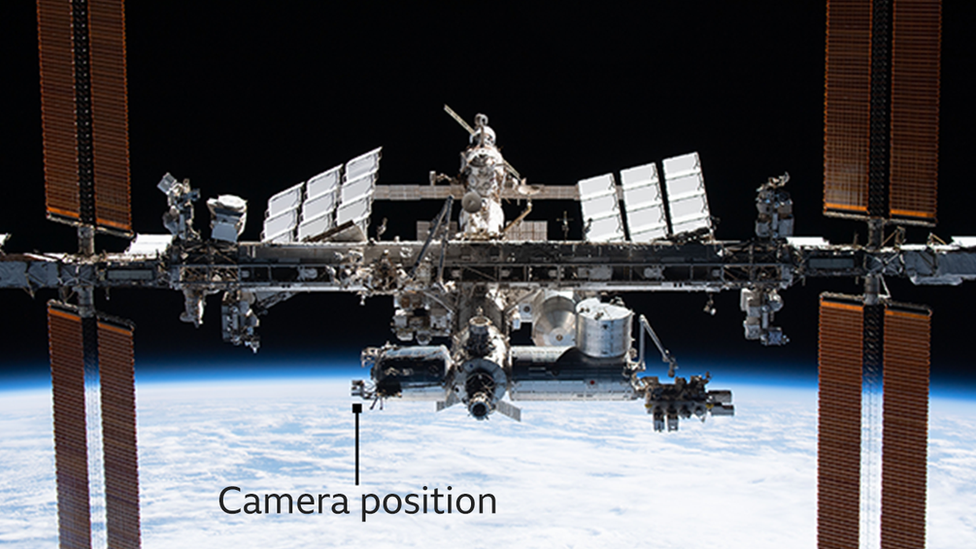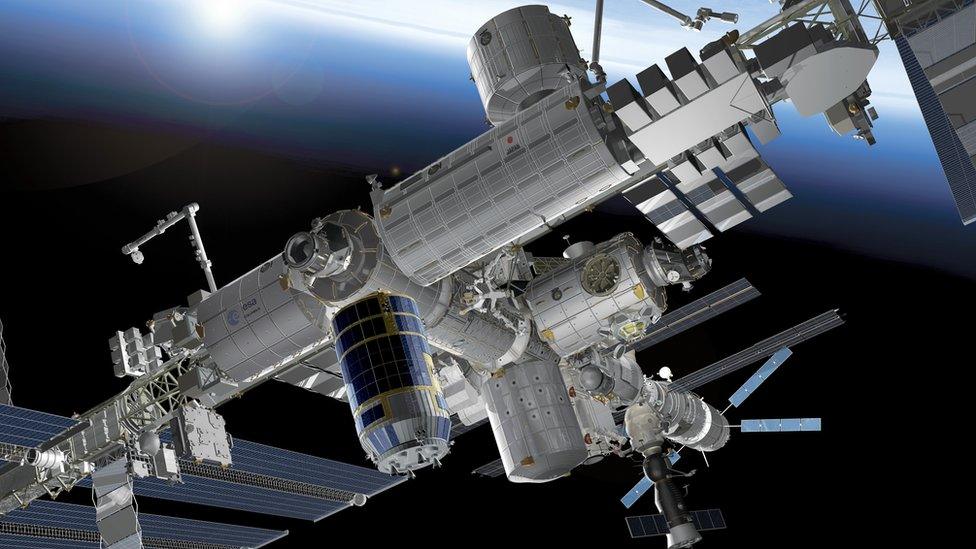International Space Station: Start-up to begin live-streaming from ISS
- Published
- comments

The ISS will soon be going live with footage of what we're all getting up to on planet Earth
Forget your favourite human streamers - soon the International Space Station (ISS) will be going live.
Ultra high-definition cameras will be making a trip up to the space station on Thursday 21 March, so everyone on Earth can see our planet on an incredibly clear livestream.
The 4K system from company Sen will be attached to the front of the ISS and will send back some images that are expected to be out-of-this-world.
The London based company already has a smaller satellite of its own that it has been livestreaming from since 2022.
A rare view: A cloudless UK and Ireland
And Sen hopes to eventually film astronauts going back to the Moon for the first time since 1972.
Boss Charles Black told BBC News: "Our goal is to bring a whole new way of seeing space, Earth and the Moon.
"We want to put cameras in lunar orbit, on the lunar surface and on lunar rovers, filming astronauts as humans return to the Moon.
"We want to tell that story."
The ISS is essentially a big floating laboratory.
Astronauts (people trained in the US, Canada, Europe and Japan to work in space) and cosmonauts (trained in Russia) travel 250 miles above Earth to live, work, and conduct science experiments in orbit.
The cameras will be carried up to the space station on its next resupply mission.
Food, clothes and science equipment will be brought via a SpaceX rocket, which will blast off around 16:55 local time (which is 20:55 in the UK).
They will be brought to the Bartolomeo deck through an airlock when it arrives.

One camera will look straight ahead at the horizon, capturing sunrises and sunsets, as well as the northern and southern lights.
A second camera will look downwards, to check in on what's happening on Earth.
The cameras will be fitted with software that will adjust the settings based on how much light there is, so hopefully they'll be able to capture things like city lights when the station is in darkness.
The golden colour of the Namibian desert in Africa
The size of the stream from this camera will be about 180km by 240km (110 miles by 150 miles) and will be able to capture details as small as 60m across. For us that's fairly big, but for a camera 250 miles away, that's quite impressive.
A third camera will point at the docking point, to record what comes and goes on the ISS.
The 4k stream will be on around the clock, and will jump between these three different viewpoints.
The smoke from Canadian wildfires
The company also wants to sell the footage to film, TV and news companies.
For example, one thing they want to do is allow news organisations to tell stories from a different angle. If there is a natural disaster on Earth, the company will be able to provide footage of it from a bird's-eye view.
- Published7 March 2018

- Published20 November 2018

- Published8 June 2023

